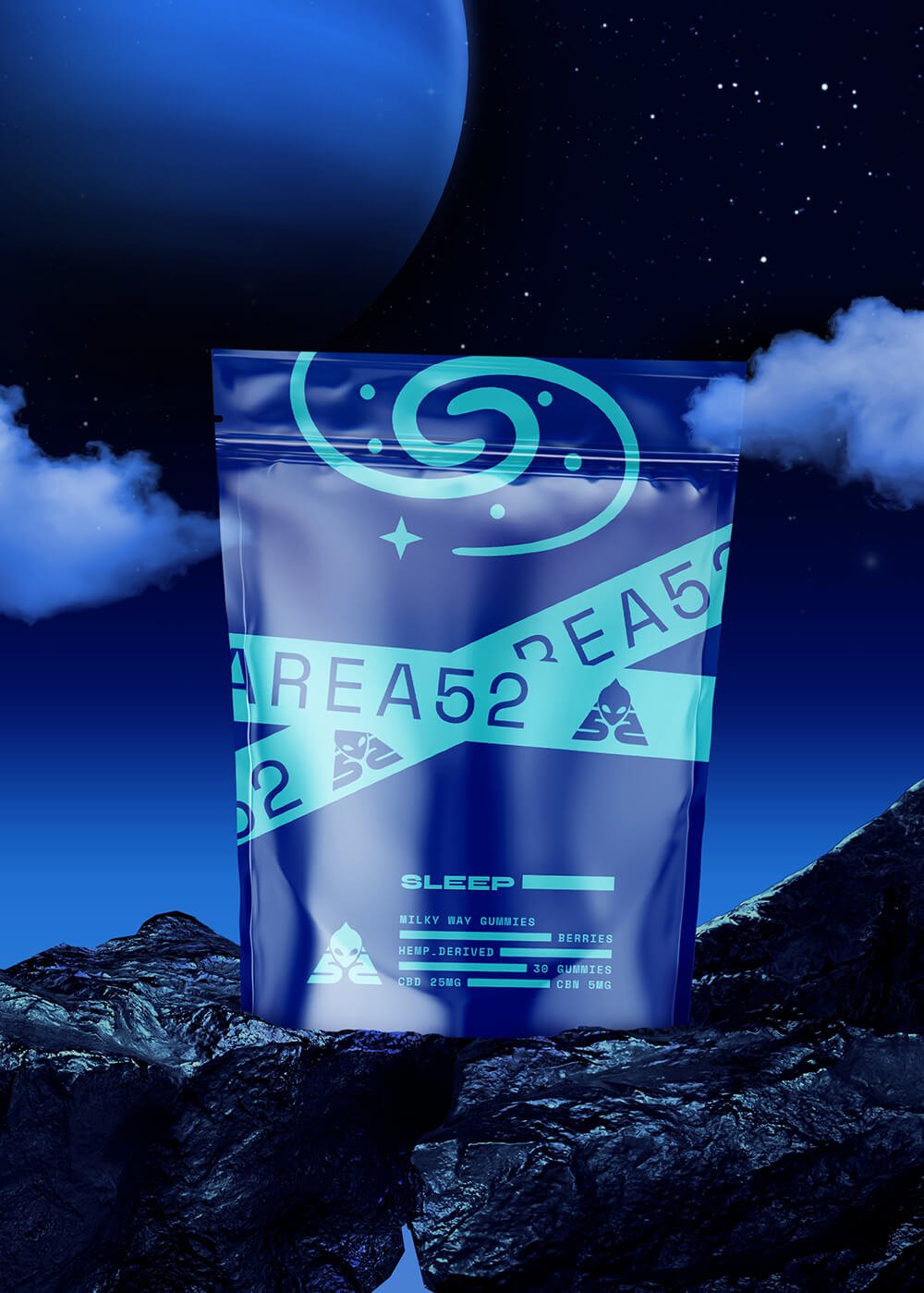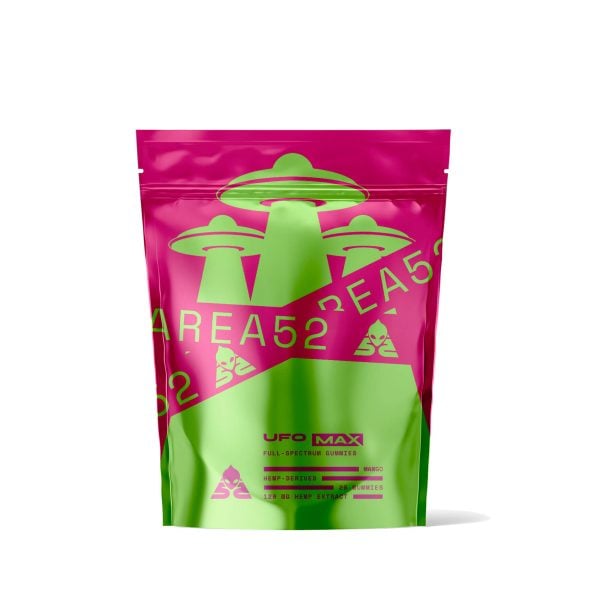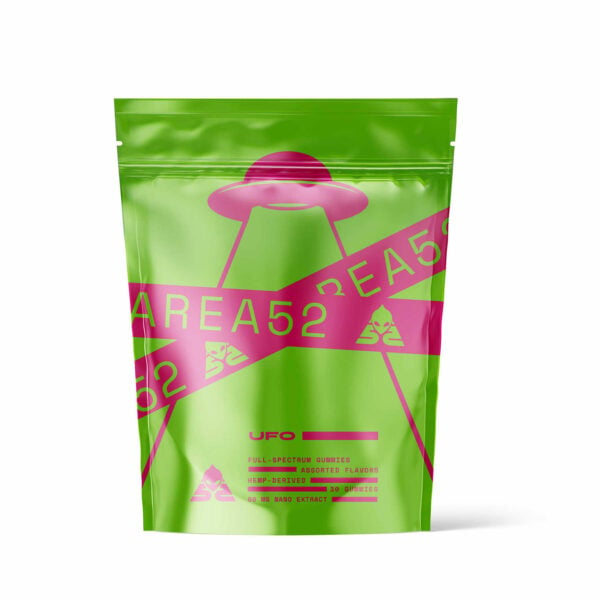What Is Rosin & How to Use It?
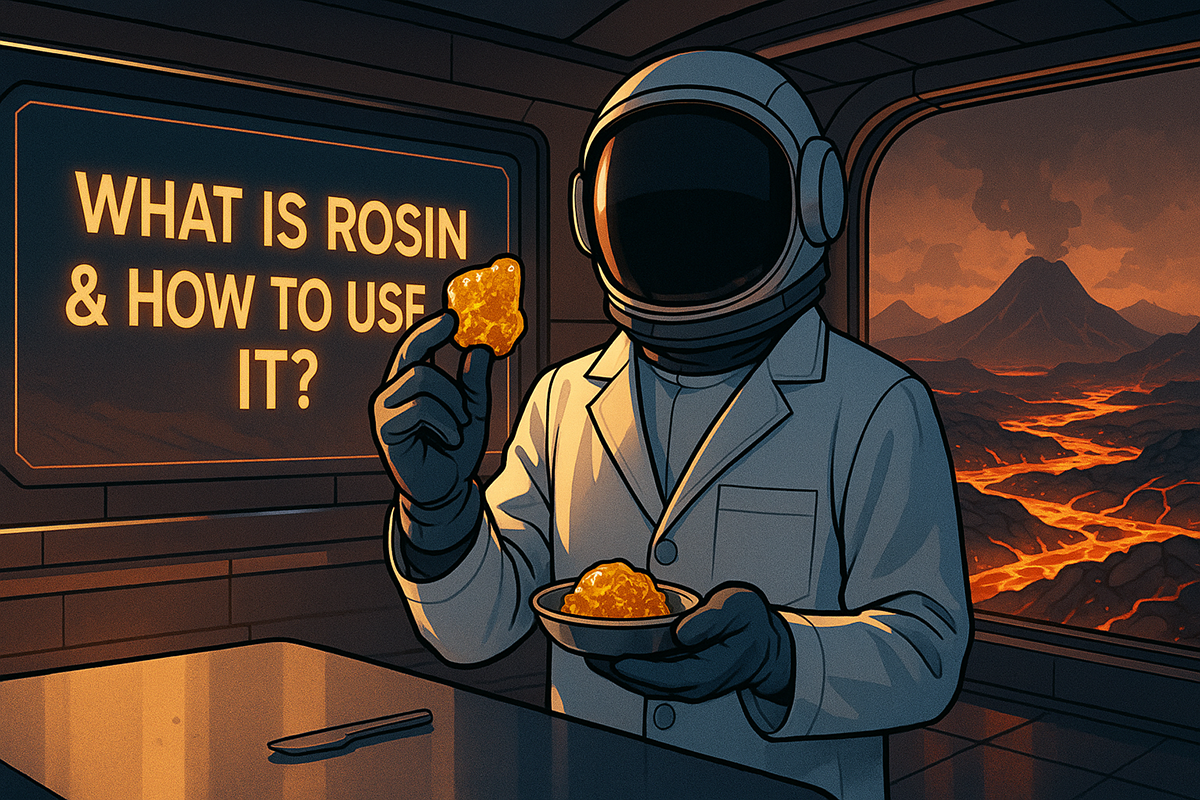
More and more THC and delta 8 THC users are turning to cannabis concentrates.
One of the more interesting trends to pop up lately is cannabinoid-rich rosins. They’re some of the most aromatic cannabis extracts available — leveraging the powerful benefits of cannabis-derived terpenes.
This is a solventless cannabis concentrate that’s popular for its rich aroma and high potency. In this article, learn what is rosin, how it’s made, how to use it, and why rosin is the future of cannabis extracts according to cannabis connoisseurs.
What Is Rosin?

Rosin is a waxy, pasty extract containing high concentrations of different compounds in marijuana or hemp plants. It’s made without solvents and can contain THC, delta 8 THC, CBD, terpenes, and more. This sticky substance is made through a solventless extraction method and can contain THC, delta 8 THC, CBD, terpenes, and more.
There are basically two ways to extract these compounds from marijuana and hemp plants: heat under pressure and solvents. Solvents include alcohol, oil, vegetable glycerin, and other compounds that naturally pull THC, delta 8 THC, or CBD out of the plant material.
There are many ways to complete the extraction using solvents, but rosin is specifically made without any solvent. Instead, the cannabis flower or starting plant material is placed under very high pressure and heated — which is the same process used to create diamonds and minerals.
Rosin is the liquified resinous mixture that’s forced out of the marijuana or hemp flower while under extreme pressure and is considered to be the purest cannabis extract around.
What Is Rosin Made Of?
Rosin’s primary starting material is made from organic cannabis flower, be it marijuana or hemp buds. The fresher, the better.
Depending on the temperature and pressure used, the rosin can contain concentrations of THC up to 80%. Temperatures and pressure also determine whether the final rosin appears more liquid or wax-like. Some rosin enthusiasts aim for “solventless hash oil,” while others prefer a buddery or shatter-like consistency.
Terpenes will also naturally be included in rosin, as will trace amounts of other minor cannabinoids. These compounds are normally lost in the extraction process from high heat or the use of caustic or volatile solvents.
How Do You Make Rosin?
Most individuals who make their own rosin use a device aptly referred to as a “rosin press,” which is a hydraulic or mechanical press with heated pressing plates.
Generally, rosin comes from pressed marijuana or hemp flower, but it can come from kief or hash as well.
Before pressing the marijuana or hemp flower, it needs to be enveloped in 35-pound parchment paper to prevent impurities and plant matter in the finished product.
The heated pressing plates then compact the parchment-wrapped flower at a consistent heat and pressure. The rosin is eventually forced out of the flower and scraped off the parchment paper.
Can You Make Rosin Yourself?
You can make your own rosin, but you’ll need cured marijuana or hemp flower, rosin parchment paper, and a rosin press. Presses can be quite costly, so most people just buy their rosin instead.
Some individuals make a makeshift rosin press out of a hair straightener and a woodworking clamp. The process is similar to using a dedicated rosin press: you use the hair straightener plates as a heat source and clamp them together to create high pressure.
As you might expect, the results are much less consistent, and the yield is much lower than if you use a rosin press.
The Rise of Hash Rosin & Live Rosin
Two popular variants have emerged for cannabis connoisseurs seeking “solventless concentrate” with unique flavor and terpene profiles:
- Hash Rosin
- Made by pressing dry sift hash or bubble hash using a rosin press.
- Typically more potent because it starts with a refined concentrate.
- Minimizes residual solvent risk, ensuring a high quality rosin loaded with terpenes and minor cannabinoids.
- Live Rosin
- Stems from flash-freezing fresh cannabis plant material.
- Follows a “live resin” approach but remains solventless.
- Preserves more of the cannabis flower’s terpenes, delivering intense aroma and flavor.
Both hash rosin and live rosin keep the essence of cannabis fully intact, which is why many in the cannabis industry deem them premiere-quality extracts.
How Much THC Is In Rosin?
Most commercial rosin is between 75% and 85% THC. For comparison, marijuana flower from dispensaries is usually between 15% and 25%, depending on the strain. As such, rosin is about four times as potent as marijuana flower.
Homemade rosin varies wildly in purity, especially if you use a homemade press to make it. You can reasonably expect around 40% to 60% purity for homemade rosin.
The amount of THC in rosin by weight depends on the plant used to make it. For example, medical strains that reach THC levels around 30% will naturally produce a rosin higher in THC content. Strains around the 15% THC level produce less potent rosin.
How Do You Use Rosin?
Rosin needs to be heated to convert the THCa to THC, which produces the psychoactive effects. The most common way to consume rosin is to vape it or smoke rosin, but some people make rosin-infused edibles with it instead.
Most people use a dabbing rig to enjoy their rosin. The bowl is heated to the desired temperature, and then the user inhales through the mouthpiece while placing a small amount of the rosin wax into the bowl. A bowl cover — usually called a carb cap — is typically used to direct airflow around the bowl to ensure all rosin is heated and consumed.
Some users simply add a small dab of rosin with the flower or in a bong, pipe, bowl. Others roll small amounts of rosin into joints or blunt before smoking. The rosin heats up with the flower right before it’s inhaled.
How Do You Store Rosin?
Rosin cools to a stable form but remains vulnerable to heat changes and oxygen. Keep rosin in a sealed container, away from direct light, to preserve that sticky substance and its potent terpenes. For extended shelf life, many connoisseurs keep their solventless hash oil or flower rosin in the fridge or a cool, dark area. Minimizing oxygen flow also helps the resinous sap last longer.
It’s best to store rosin in a small, air-tight glass container. Standard rosin containers can hold up to about a gram at a time, maximizing freshness and minimizing the amount of air that gets into the container. Exposure to the air gradually degrades the rosin, making it less potent and stripping it of its valuable terpenes.
Most regular users store their rosin at room temperature without any significant degradation, but those who use rosin less frequently will find that it’s best kept in the fridge and thawed to room temperature for use.
You can freeze it for long-term storage, but you’ll likely notice some degradation over time. It’s important never to open a frozen rosin container until it thaws, as condensation can form inside and cause the rosin to rot prematurely.
Three Different Types of Rosin

There are a few different types of rosin, depending on the plant material from which its extracted. Rosin will almost always contain multiple cannabinoids and terpenes, but three primary types are named for the main constituent.
1. CBD Rosin
CBD rosin has high concentrations of cannabidiol (CBD) and is made by pressing high-CBD, low-THC strains of hemp flower, which legally contains less than 0.3% THC by weight.
CBD rosin can reach potencies of up to 85%. Additional minor cannabinoids and a wide variety of terpenes will usually be present in the final product.
Most CBD rosin users consume it for pain relief, to aid in relaxation, or to help them sleep.
2. Delta 9 THC Rosin
Delta 9 THC — commonly referred to as just “THC” — is the principal psychoactive constituent in marijuana. As you can imagine, delta 9 THC rosin is usually made with a potent high in mind. This rosin has the same benefits as THC but with more powerful effects because of the extra terpenes and minor cannabinoids present in the final product.
Manufacturers make delta 9 THC rosin by pressing marijuana flower or kief collected from marijuana plants.
The potency of this rosin typically falls between an impressive 75% and 85%, making this one of the purest ways to consume full-spectrum THC.
3. Delta 8 THC Rosin
Delta 8 THC rosin is different from delta 9 THC and CBD rosin, solely because delta 8 THC appears naturally in hemp and marijuana plants in very minimal concentrations. Instead of pressing pure plant matter, most manufacturers spray hemp flower with a delta 8 distillate before pressing the rosin.
Therefore, delta 8 THC rosin is less potent than delta 9 rosin, often between 60% and 75%.
These products offer all the benefits of delta 8, plus the addition of CBD, terpenes, and a long list of nearly 100 minor cannabinoids rarely included in delta 8 THC products.
The experience from a high-grade delta 8 THC rosin is nothing like standard delta 8 products. It feels clearer, more mellow, and is less likely to make you feel groggy the following day.
Rosin vs. Live Resin: What’s the Difference?
Many THC and CBD users confuse rosin and live resin because of the similar name and the appearance of the product.
There are a few key differences between the two; the most important is the production method or extraction process.
1. How It’s Made: Rosin vs. Live Resin
Manufacturers make rosin by introducing marijuana or hemp flower or kief to high pressure and heat. It’s considered a more natural product than most others since its production doesn’t require solvents or chemicals.
Live resin is made by cryogenically freezing plant material after harvesting. Then hydrocarbon solvents like butane or propane is used to extract the desired compounds — delta 9 THC, delta 8 THC, or CBD. Although the process removes the hydrocarbon solvent before sale or consumption, live resin is considered less natural than rosin.
Individuals without advanced equipment can make rosin with household items or by purchasing a reasonably inexpensive rosin press. Live resin is almost impossible to make at home without thousands of dollars of high-tech equipment.
2. Taste: Rosin vs. Live Resin
Taste is another crucial difference between rosin and live resin. Rosin naturally contains terpenes, which contribute to the flavor when smoking. Most users report that rosin tastes better than smoking flowers.
Unfortunately, the heat needed to make rosin can damage some of the terpenes. There’s still much more than a standard cannabinoid extract, but live resin still takes the win in terms of total terpene content in the final product.
3. Cost: Rosin vs. Live Resin
Finally, rosin and live resin differ in cost.
Rosin production only processes a small amount of flower at once, whereas the live resin process is generally cheaper and makes larger batches at once.
You can expect to pay about 10% extra for rosin products with the same equivalent in cannabis flower as you would with live resin.
Live resin isn’t exactly cheap either. These products cost an average of 20% more than standard cannabinoid distillates.
Is Rosin Legal?
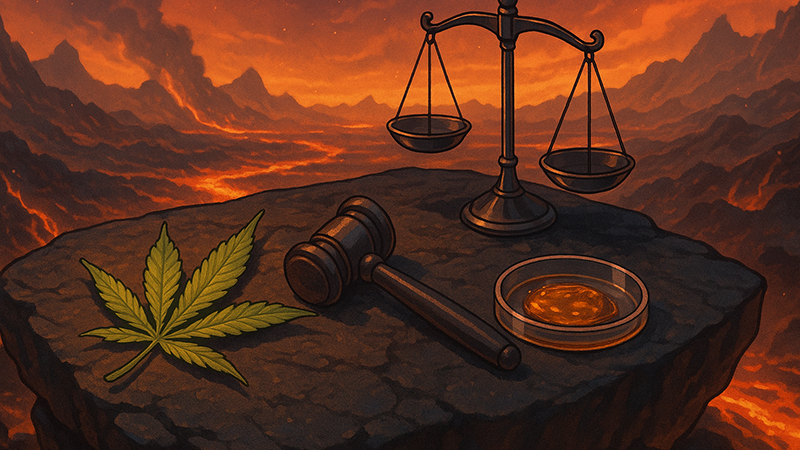
The legality of rosin varies from state to state with the marijuana and hemp laws, and it also depends on the type of rosin.
Is CBD Rosin Legal?
CBD rosin is federally legal, provided that it’s from hemp plants. The 2018 Farm Bill legalized hemp production, manufacturing, and the sale of any products containing constituents of legal hemp plants.
However, CBD laws vary from state to state. CBD rosin is legal in any area where CBD is legal. Some states have banned CBD altogether, while others have restrictions on its sale and production. The legality surrounding CBD rosin is subject to that of CBD in your state.
Is Delta 9 THC Rosin Legal?
Similarly, delta 9 THC rosin is legal in any area where delta 9 THC isn’t prohibited. Marijuana is still illegal federally, so products containing delta 9 THC, including rosin, are illegal as well.
However, all states have their own laws surrounding THC. If your state permits recreational marijuana, then you’ll have no issues buying, possessing, and using delta 9 THC rosin. If THC is only legal for medical marijuana patients in your state, then you’ll need a medical marijuana card to buy and use delta 9 THC rosin.
Is Delta 8 THC Rosin Legal?
Delta 8 THC extracted from hemp plants is technically legal on a federal level. However, your state’s local laws can vary, so you should check to see how delta 8 THC is governed in your area before buying, carrying, or using delta 8 THC rosin.
Ensuring High-Quality Rosin
Here are a few ways to ensure you’re buying high-quality rosin:
- Check Test Results
Look for rosin that has been lab-tested to confirm it’s free from microbial contaminants or residual solvent contamination (low risk, but still possible). This assures you’re getting high quality rosin and not just an overpriced or adulterated product.
- Look for “Full-Spectrum” Indicators
True solventless concentrate often contains a complete range of minor cannabinoids and terpenes from the cannabis plant. Words like “full-spectrum” or “whole-plant” can imply you’re retaining more of the plant’s original chemical profile.
- Consider the Rosin Press Method
Brands that detail their extraction process are more trustworthy. If you see mention of advanced or carefully calibrated heat and pressure settings, it’s generally a sign they pay attention to detail and preserve maximum flavor.
Key Takeaways: What Is Rosin?
Rosin is a solventless extract taken from either marijuana or hemp plants. It contains high concentrations of delta 9 THC, delta 8 THC, CBD, or some combination of these three major cannabinoids. It also typically contains various natural terpenes that enhance the flavor and minor cannabinoids that contribute to the effect profile.
Rosin is made by introducing marijuana or hemp flower or kief to high pressure and heat. The resulting extract can be stored at room temperature or in the fridge to preserve the purity or in the freezer for longer-term storage.
Most rosin users smoke the product using a dabbing rig, but many use it with other smoking apparatuses, like a bong, pipe, bowl, joint, or blunt. You can also add rosin to your vape as long as it’s set up for concentrates.
Rosin is considered one of the purest extracts possible. It’s regarded as a premium product and often fetches a relatively high price. Its legality varies from state to state, depending on local laws and the cannabinoids contained within it.
Frequently Asked Questions
1. What is rosin and what is it used for?
Rosin is a solventless cannabis product. It is derived from cannabis flower or bubble hash using heat and pressure. People dab rosin or include it in joints to not only increase potency but enhance the flavor, too, thanks to high terpene retention.
2. What is rosin in edibles?
Rosin in edibles refers to extracts used in making treats like brownies, gummies, or other infused products. People decarboxylate rosin, then blend it into recipes, delivering robust flavors and potent psychoactive effects or relaxing benefits. This process also gives the edibles a longer-lasting result.
3. What is smoking rosin?
Smoking rosin means applying direct or indirect heat — commonly via dabbing — to the sticky substance so the user inhales the resulting smoke or vapor. This often happens with a dab rig, e-nail, or specialized vape pen. Plenty of users prefer this approach as it offers potent effects and safeguards the fresh, terpene-rich taste of the concentrate.
4. Does rosin get you higher than resin?
Rosin and resin vary in production and terpene levels. Live resin might have a more pronounced taste from flash-freezing, while rosin can deliver a purer flavor if carefully processed. One or the other might feel stronger depending on the starting material, but generally speaking, they’re both potent cannabis extracts.
When done right it can taste cleaner or smoother. The strength also depends more on the quality of the original flower or hash, as opposed to one concentrate being stronger in all cases.
5. Can you put rosin in a joint?
Yes. Sprinkling a bit of rosin in a joint (sometimes called “twaxing”) ups potency and flavor. But don’t use too much. Too much rosin can make the joint burn badly or feel rough when breathed in.

